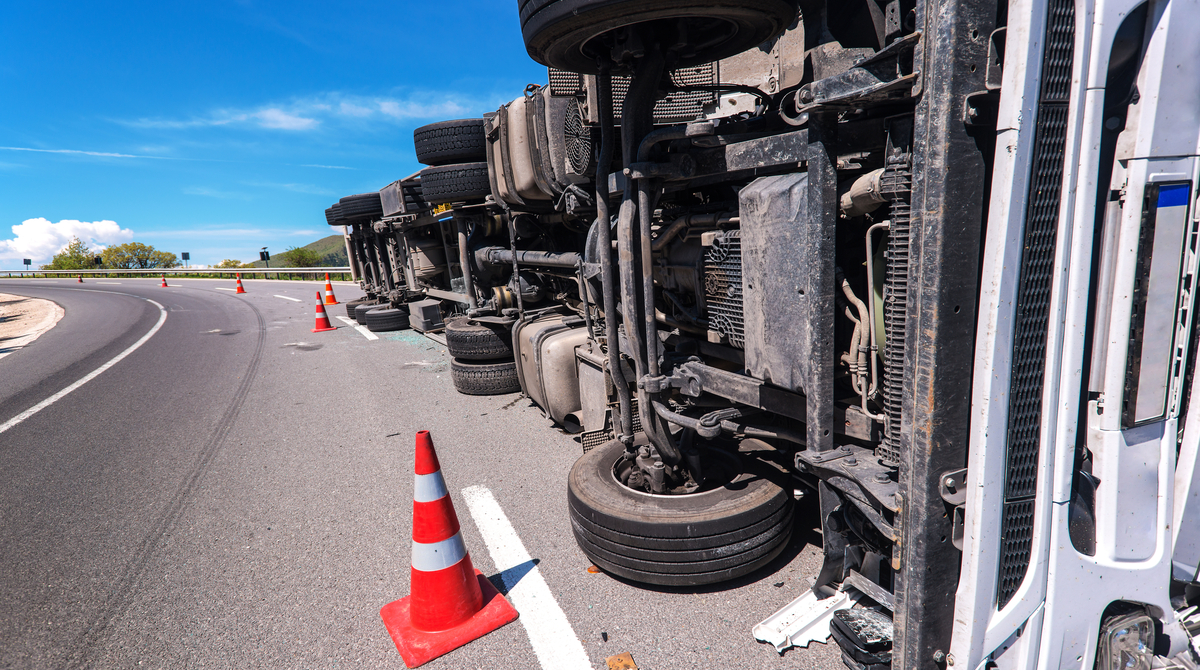
When the pandemic started and lockdowns swept the nation, construction workers were deemed essential and many DOT's saw a golden opportunity to fast-track jobs that would normally tie up traffic. You would think with the decrease of traffic on the roads, that the work zone crashes would be down. As a matter of fact, there has been a rising increase in road construction accidents over the past year.
According to Construction Dive, even with reduced traffic, as much as 60% of road contractors have reported motor vehicle accidents in their work zones over the last year. The good thing is that both contractors and state officials have realized that something needs to be done. Thus they have taken some steps to handle the alarming situation.
Construction software company HCSS and the Associated General Contractors of America conducted a survey last month, examining the dangers in highway work zones. During a webinar that presented the results of the survey, Steve McGough, the CEO of HCSS, said that despite what had been expected, the number of crashes in work zones were not down. The amount of traffic was down, but the number of accidents actually increased. One explanation could be that people are in more of a hurry to get where they want to go.
National Highway Traffic Safety Administration (NHTSA) states that there were 7% more deaths on the roads in the United States, although Americans drove 13% less than the year before. Perhaps the decision to fast-track some jobs was not such a great idea. People likely concluded that they could drive faster due to less traffic. At the same time, they came across road closures they didn't expect.
The rising increase in road construction accidents and fatalities is most likely owed to speeding. And driving too fast is probably the worst thing one can do in construction zones. Last year, a traffic control flagger, the one person who should regulate traffic, was hit and killed by a speeding car in McLean County, Illinois. In Henry County, Iowa a state transportation worker died after a semi-truck hit his maintenance vehicle from behind. He was carrying a lighted signboard which was warning that roadwork was underway. These are only some of the many examples. Impaired driving, speeding and failure to wear a seat belt all contributed to this increase.
The worst part of the situation is that slowly we are getting back to normal. The traffic is coming back and the amount of accidents are steadily rising. Yet, the motorists still haven't slowed down. What is more, as Best Cross Country Movers informs us, the pandemic caused a lot of people to relocate and this has not slowed down. This is another industry that hasn't suffered a blow. So they expect this mobility to continue, which, coupled with the excitement of change after a year of being cooped up, could pose more problems on the roads.
Construction Dive states that construction companies, DOT's and the federal government have organized training programs that should improve work zone safety. Since 2005, state and local DOT's have received more than $40 million for work zone safety training.
Moreover, officials are looking for different solutions. They are looking at new technology that will alert workers about the approaching hazards. These could be vibrating, wearable garments. Vehicles should also have a piece of technology that would warn drivers of the presence of another car or a person behind it.
According to the survey conducted by HCSS and the Associated General Contractors of America, 70% of contractors believe that tougher laws against cell phone use would significantly decrease the number of work zone accidents, injuries and fatalities.
Also, 82% of contractors think that more police in work zones would make a huge difference. While some states already have laws that require drivers to slow down when passing maintenance vehicles or move over, enforcement of these laws is uneven.
Other options include:
- Increased police presence
- Cameras in highway work zones
- Portable rumble strips that alert drivers as they get closer to workers
- Automatic flagger-assisted devices to control traffic remotely
- Truck-mounted barriers to protect workers while they work
The rising increase in road construction accidents is a clear signal that something needs to change. Everyone agrees that slowing down is the best way to go. Strict laws, various devices, and other equipment are undoubtedly helpful, but more police identifying drivers distracted by electronic devices and those who are speeding are a must.
Posted by Judy Lamelza




